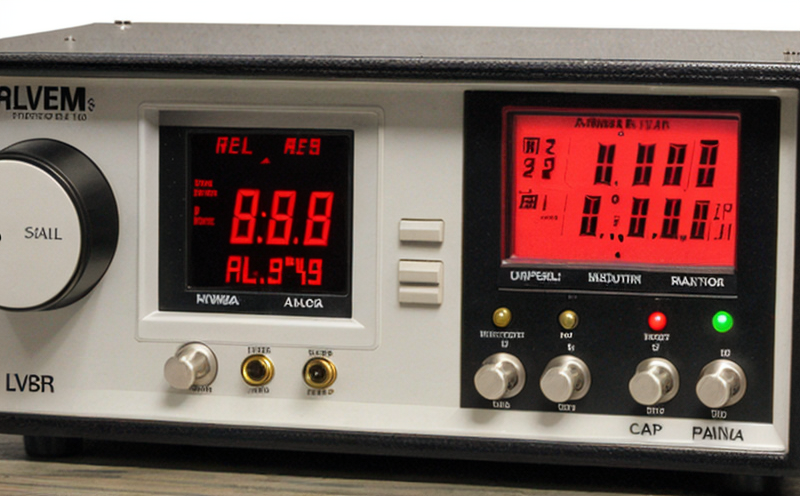ISO 4037-2 Calibration of Photon Radiation Survey Instruments
The ISO 4037 series is a comprehensive set of standards that governs the performance and calibration of radiation detection instruments. Specifically, ISO 4037-2:2018 provides detailed guidance on calibrating photon radiation survey instruments such as Geiger-Müller counters, scintillation detectors, and ionization chambers.
The calibration process is critical for ensuring that the instrument readings are accurate. This standard specifies the procedures to ensure the instruments meet the required accuracy levels under various environmental conditions. The primary goal of this service is to provide reliable and validated calibration services that help organizations comply with national and international regulatory requirements.
Calibration involves exposing the radiation detection instrument to a known source of gamma or X-ray radiation, measuring its response, and adjusting the instrument until it provides accurate readings. The standard outlines specific procedures for determining the energy spectrum of the calibration source, selecting appropriate standards, and ensuring that the measurement conditions are met.
Compliance with ISO 4037-2 is mandatory in many industries where radiation detection instruments are used, including healthcare, nuclear power, environmental monitoring, and research laboratories. Non-compliance can lead to significant fines and reputational damage. Therefore, it is essential for organizations to ensure that their calibration services meet the requirements of this standard.
The process typically involves several steps:
- Selection of a suitable calibration source with known energy spectrum.
- Setting up the instrument in a controlled environment.
- Exposing the instrument to the calibration source and recording its response.
- Adjusting the instrument settings until it provides accurate readings.
- Repeating steps 2-4 under different environmental conditions (e.g., temperature, humidity).
The use of a calibrated radiation detection instrument ensures that measurements are accurate and reliable. This is particularly important in environments where even small errors can have significant consequences. For example, in nuclear power plants, incorrect readings could lead to safety issues or regulatory non-compliance.
| Step | Action | Purpose |
|---|---|---|
| Select calibration source | Choose a source with known energy spectrum and appropriate intensity level. | To ensure that the instrument is exposed to well-defined radiation conditions. |
| Set up measurement environment | Create controlled conditions, such as temperature and humidity, to mimic real-world environments. | To minimize environmental effects on the calibration process. |
| Exposure | Expose instrument to the calibration source and record its response. | To determine the actual performance of the instrument under test conditions. |
| Adjust instrument settings | Make necessary adjustments to ensure accurate readings. | To calibrate the instrument according to ISO 4037-2 requirements. |
| Repeat calibration | Calibrate under different conditions to validate accuracy and repeatability. | To ensure that the instrument remains calibrated over time and in various environments. |
Eurolab Advantages
Eurolab, as a leading calibration laboratory, offers unparalleled expertise in ISO 4037-2 compliance. Our team of highly skilled professionals ensures that all calibration processes are conducted with the highest standards and accuracy.
- Expertise: Eurolab’s staff comprises industry experts who have extensive experience in radiation detection instruments.
- Accreditation: We hold ISO/IEC 17025 accreditation, ensuring that our calibration services meet the highest quality standards.
- Technology: Our state-of-the-art equipment and software provide precise and reliable calibrations.
- Compliance: Eurolab ensures that all processes comply with international standards such as ISO 4037-2.
We understand the importance of accurate radiation detection in various sectors. Our services are tailored to meet the unique needs of different industries, ensuring that our clients can trust the accuracy and reliability of their instruments.
Competitive Advantage and Market Impact
- EuroLab's Reputation: Our reputation for delivering accurate and reliable calibration services has made us a preferred choice among numerous organizations.
- Client Satisfaction: High satisfaction rates from our clients indicate the quality of our work.
- Innovative Solutions: Eurolab continuously invests in research and development to provide innovative solutions that meet current market demands.
- Cost-Effective: Our services are designed to be cost-effective, ensuring that clients receive value for their investments.
EuroLab's commitment to excellence in ISO 4037-2 calibration has positioned us at the forefront of this industry. By providing accurate and reliable calibration services, we help our clients maintain regulatory compliance and ensure safety in radiation detection practices.
Use Cases and Application Examples
| Industry | Application Example | Purpose of Calibration |
|---|---|---|
| Nuclear Power Plant | Calibration of Geiger-Müller counters used in reactor monitoring. | To ensure accurate measurement of radiation levels near the core. |
| Hospitals | Calibration of scintillation detectors for patient dosimetry. | To maintain accuracy in radiation therapy and diagnostic procedures. |
| Environmental Monitoring | Calibration of ionization chambers used to measure radiation levels in the environment. | To ensure compliance with environmental regulations and public safety standards. |
The use cases for ISO 4037-2 calibration are vast, spanning various industries that rely on accurate radiation detection. In nuclear power plants, calibration ensures that operators can accurately monitor radiation levels around the reactor core, minimizing risks to personnel and the environment. Hospitals benefit from accurate dosimetry measurements, ensuring that patients receive the correct dosage of radiation during therapy or diagnostics. Environmental agencies use calibrated instruments to measure radiation in the environment, helping them comply with stringent regulations.





